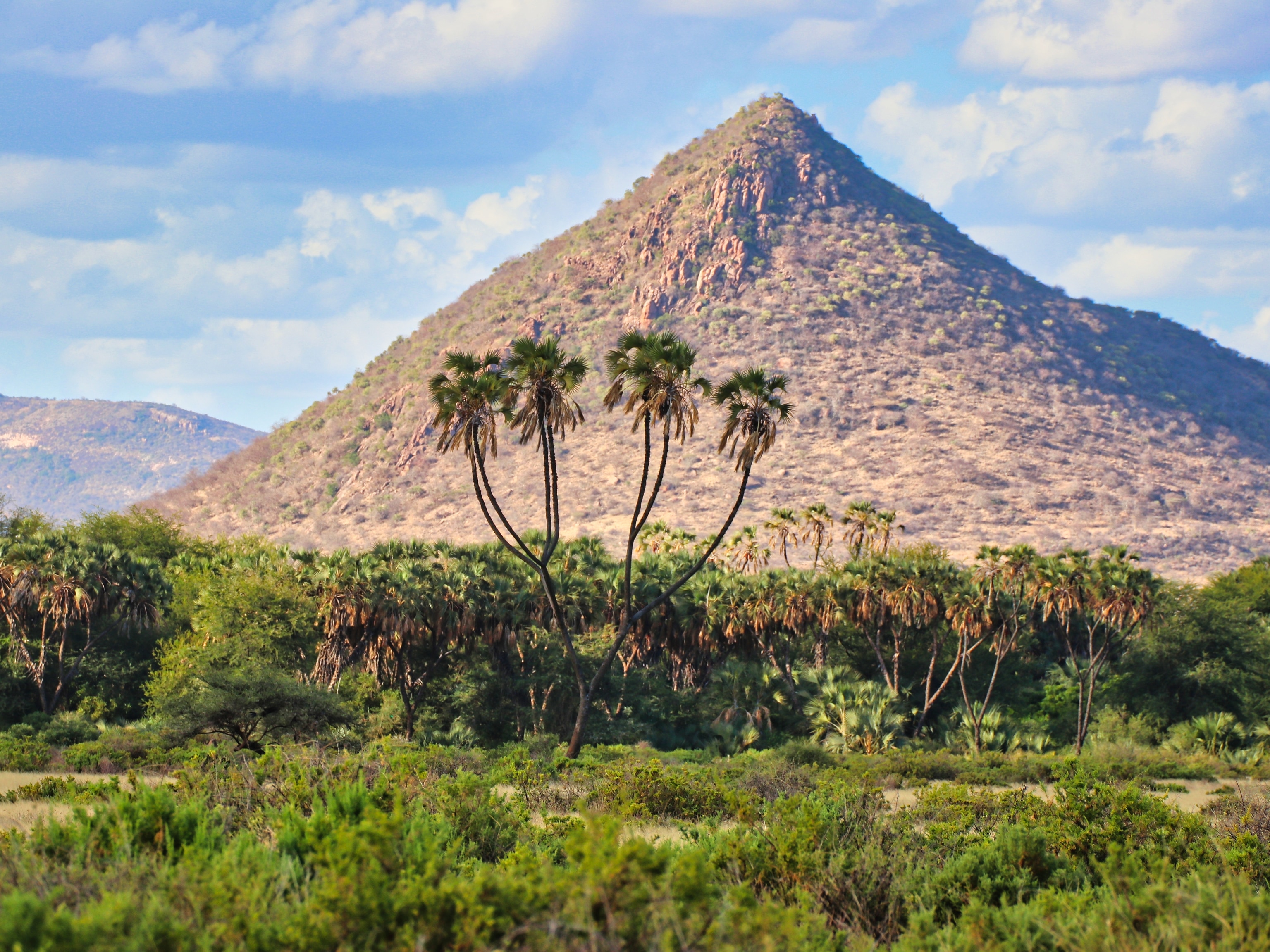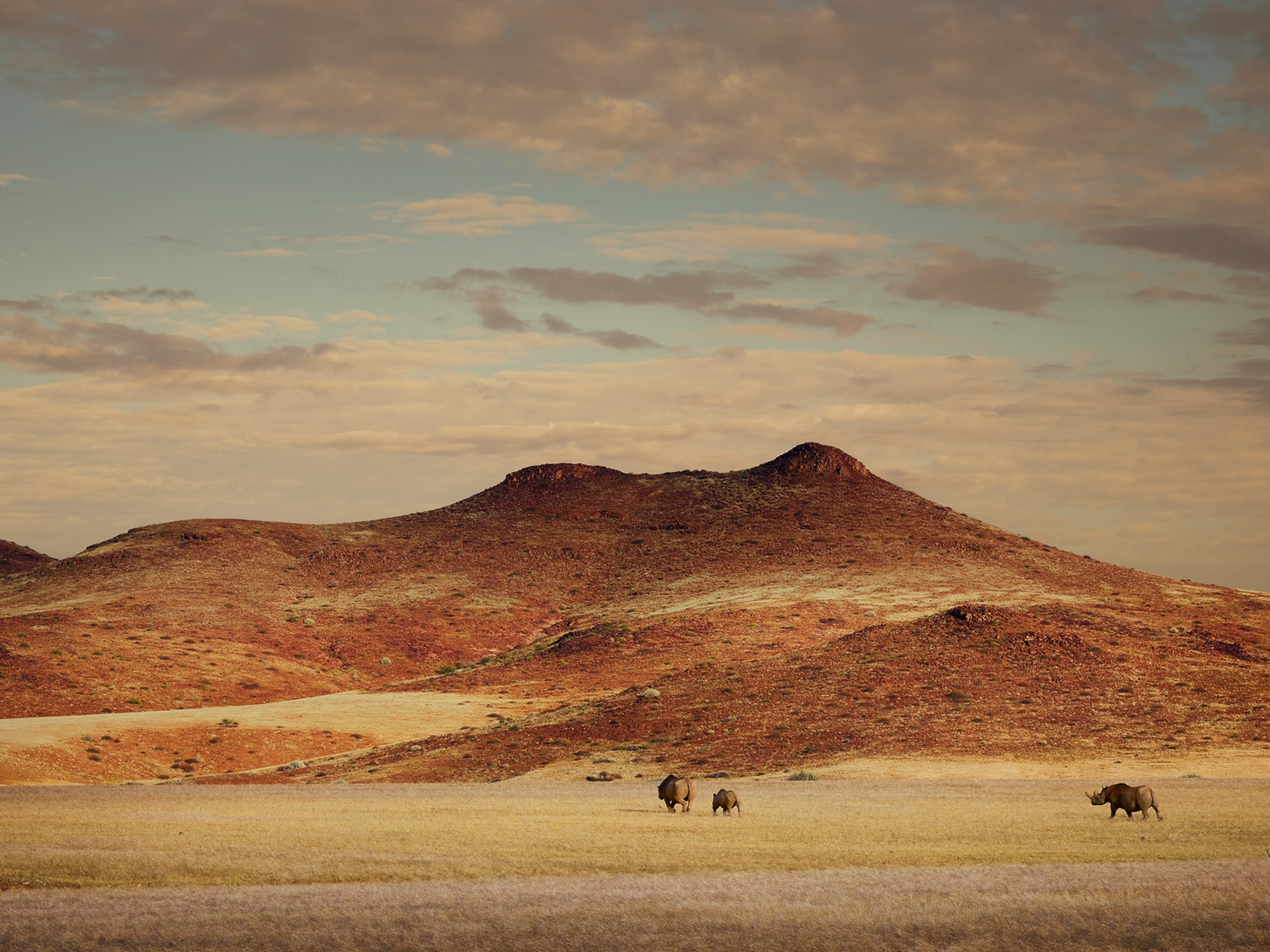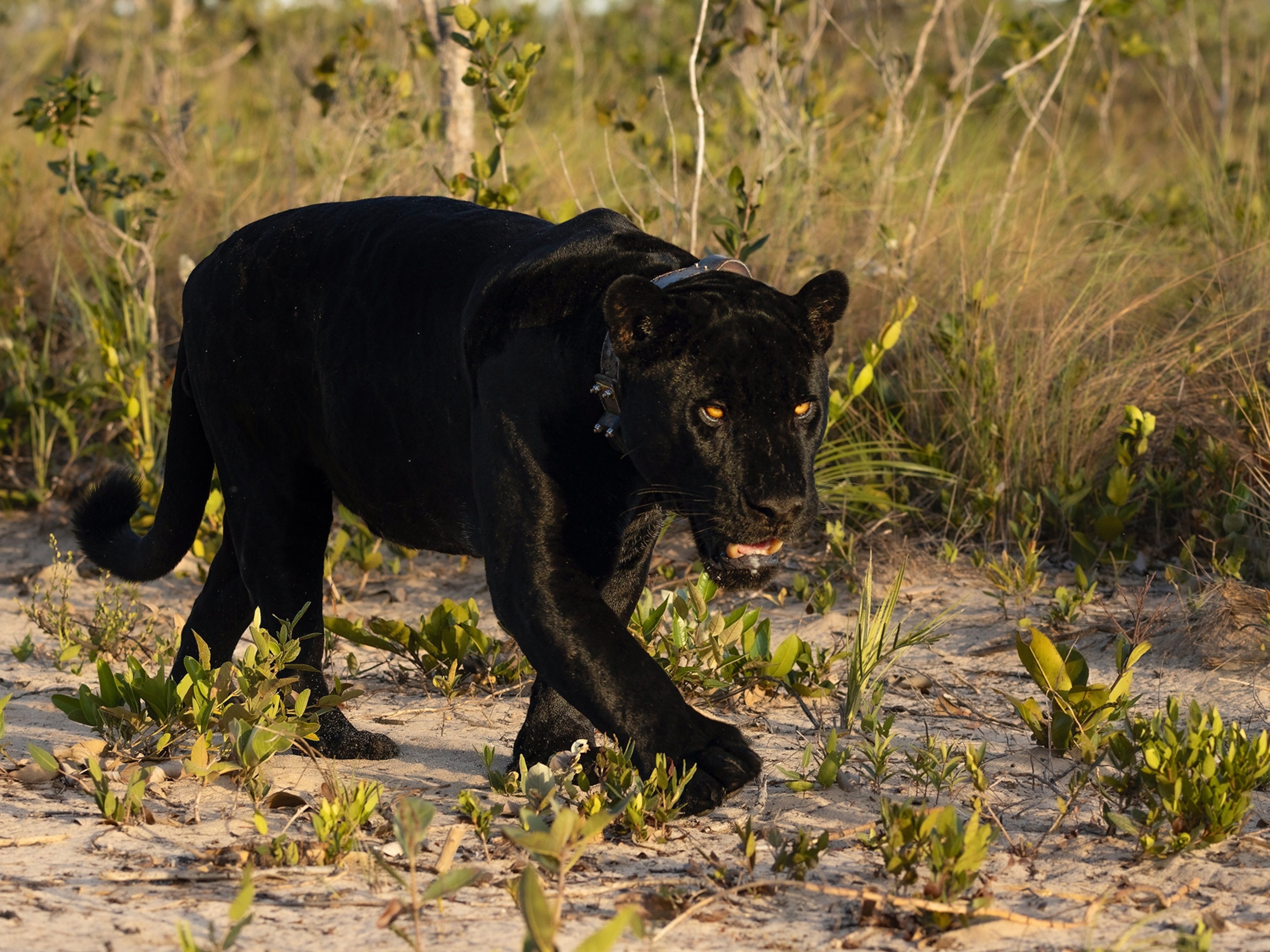It pains me to say it now, but for many years I lived under the illusion that only the very rich could afford an African safari. This saddened me. My preferred strategy for wealth accumulation—Powerball—had yet to pay dividends, and sometimes I’d wonder if I’d ever see a lion without having to pay a zoo admission fee.
Fortunately, as it turned out, I was profoundly mistaken. “Do you think South Africans spend $2,000 a night to see an elephant?” my friend asked. She had lived in Cape Town for many years—was even married to a South African—and knew what she was talking about. “If you really want to go on safari, travel like a local. Rent a cheap car and drive yourself. With airfare I bet it would cost less than $2,000 for a week of game viewing.”

“Travel like a local.” The words were a revelation. Safaris, I’d always thought, were for men who referred to each other as “old boy” and for women who wore cravats. I did not realize there was another way—the South African way.
Which is how I found myself in the town of Mkuze in KwaZulu-Natal, South Africa. I’d flown in to Durban ($750 roundtrip from Washington, D.C.) and rented the cheapest car I could find—a Ford Fiesta. Then I spent a lively day adjusting to driving on the left side of the road (apologies to the good people of KwaZulu-Natal). My plan was to visit Hluhluwe-iMfolozi Park, where I was confidently informed I’d see rhinos, before making my way through Swaziland to South Africa’s fabled Kruger National Park, an expanse of land nearly the size of New Jersey. Here one can reliably see the storied “big five”—the African elephant, the leopard, the Cape buffalo, the black rhinoceros, and the lion.

Impulsive travel, of course, is the best kind of travel. What every traveler yearns for is surprise and wonder, and nothing beats following the bread crumbs of serendipity. This was my first time in South Africa, however, so I availed myself of the advice of locals. “Don’t drive at night” was the universal dictum. Be where you need to be by sunset and stay there. Crime, unfortunately, is an issue in South Africa, but for those who are amenable to common sense, a 500-mile self-guided safari tour should be as safe as a road trip to Florida.
It was fall in the Southern Hemisphere, which meant warm, sunny days and temperate evenings. South Africa is one of the world’s most biodiverse nations, and as I threaded my way north on smooth two-lane highways, I noted the sweeping changes in the landscape, from the fields of sugarcane outside Durban to rolling hills of bushveld to the savanna of African lore. Occasionally I’d find a hulking Land Rover in my rearview mirror, urging me to move toward the shoulder—where a startling number of warthogs tend to congregate. As the 4x4s raced by, I imagined they were ferrying the well-heeled tourists who’d booked luxury safaris at one of the innumerable private game reserves that ring the big national parks like orbiting satellites. I didn’t envy them—well, maybe a little bit, particularly when the Fiesta went hurtling over an unexpected speed bump.
I had booked a room at the Ghost Mountain Inn near Mkuze, which turned out to be a lovely single-story hotel with an expansive lawn that unraveled toward a mirror-smooth lake. In the near distance the Lebombo Mountains reflected the light of the late afternoon sun.
- National Geographic Expeditions
After checking in I sauntered toward the water. A troupe of vervet monkeys scampered across the grass. The colors began to melt across the sky, with flaring streaks of crimson merging into a darkening blue void. I headed toward a dock that stretched invitingly over the water. Perfect, I thought. That’s where I’ll watch the sunset. And that’s when I noticed the sign: BEWARE OF THE CROCODILES.

For real? What to do? Should I make some noise, or should I be stealthy? I tiptoed my way toward the end of the dock, my senses attuned to every ripple, every rustle of grass, when suddenly, about 20 yards from me, there was an explosion of water as a hippopotamus thundered above the surface, its gaping, toothy maw glistening with threat. I stood stunned, immobile, as I watched what many consider to be the most dangerous animal in Africa swim and belch a stone’s throw from my quivering legs.

I was beginning to feel a little out of my depth. I thought of the Ford Fiesta. I was about to encounter elephants and rhinos and herds of Cape buffalo and God knows how many other creatures that could crush my subcompact rental like an errant bug.
“So what do I do if I encounter an elephant inside the park?” I inquired. I was speaking with Jean, a matronly safari guide from Botswana who had moved to Hluhluwe more than 20 years earlier and never left.
“You should back away slowly, particularly if it’s a male elephant in musth,” she said. This seemed like sensible advice. I had stayed up late the previous night bingeing on video after video on YouTube of elephants destroying cars in South Africa.
“What about rhinos?” I pressed.
“The thing about rhinos,” she said, leaning in conspiratorially, “is that they are nearly blind. So whatever you do, do not stop your car above a pile of rhino poo. A rhino could mistake you for another rhino. It will feel challenged. And then it might charge your car, which is not something you’ll want to experience.”

Hluhluwe-iMfolozi Park, the former hunting grounds of the Zulu kings, is the oldest game reserve in Africa. Today it is perhaps South Africa’s best kept secret. I saw not more than a dozen other vehicles—an occasional multistory safari truck full of camera-laden tourists, a couple of antipoaching ranger pickup trucks. As I slowly drove in, the first critter I came across was a baby zebra suckling at its mother’s teat. Aww, I thought, it’s like a Disney movie.
That’s when the snake appeared. It slithered across the narrow, two-lane road. Sadly, I cannot tell you what kind of snake it was—Black mamba? Spitting cobra?—because I have an Indiana Jones-level fear of snakes and had to pull to the side of the road and take a few deep breaths and go to my safe place.

The park is a rugged mix of topography with steep forested hills interspersed with vast savannas. I encountered scores of extraordinary animals—zebras and impalas and wildebeests. I saw warthogs and baboons and monkeys. And then, through a clearing, about 50 yards distant, I spotted two black rhinos. Once upon a time there were but 25 rhinos in the park. Today there are roughly 1,800. If you would like to see a rhinoceros in the wild, this is where you go.
I paused, making sure I selected a spot clear of animal droppings of any kind, rejoicing that I had found the first of the big five, and then drove onward to Hilltop Camp, where people who plan ahead can stay inside the park. Often booked months in advance for its accommodations, Hilltop Camp has a restaurant where I intended to have lunch. Alas, standing in my way on the narrow road was a herd of Cape buffalo. They seemed in no hurry to mosey on. Retreat and adapt became my safari motto.

More. This is what I heard from my neurotransmitters. Once you’ve seen something as magnificent as a black rhino, you can’t help but yearn for sightings of Africa’s other charismatic megafauna. I headed through the Kingdom of Swaziland—which I found to be a surprisingly alpine country—on what was the most direct route to 7,700-square-mile Kruger National Park. Travelers with more foresight than I should reserve a bungalow in one of the park’s rest camps. I managed to snag a last-minute room at the Protea Hotel near Paul Kruger Gate. At breakfast a vervet monkey leaped on my table and stole my banana.
Day visitors to Kruger should plan on being at the gate—in my case, the Kruger Gate near Skukuza—at 6 a.m., when most of the animals are up and about in search of breakfast. There is presently a drought in southern Africa, which is bad, but for someone on a self-guided safari it made spotting otherwise reclusive animals almost painfully easy. Elephants and giraffes walked among umbrella thorn trees. Wild dogs sheltered in the nook of a marula tree. A leopard cast a furtive glance from across the river. Hippos did hippo things, while enormous crocodiles sunned themselves on the rocks.

I maneuvered the Fiesta onto the dirt roads that extend like tributaries throughout the park. I was beginning to feel at ease in my car. Perhaps too at ease. I pulled into a spot next to the Sabie River. A South African couple in a weathered SUV were staring intently at something through their binoculars.
“It’s a lion,” the man informed me. “Want to have a look?” Yes. Yes, I did. I stepped out of my car and reached for the field glasses. There, a short distance across the river, was a lion, a male with a rock-star mane that suddenly perked up at the sight of a human walking freely in his domain. “You might want to get back inside your car,” the man said, as I returned his binoculars. That seemed like the prudent thing to do, and as I settled into the Fiesta, I felt giddy. I have seen a lion in the wild.
I patted the steering wheel. Thank you, little car.
When to go
South Africa’s Kruger National Park and KwaZulu-Natal Province are best visited in spring (September-October), when you will see newborn animals, or in winter (June-August), when it’s driest—vegetation is thinner and visibility is better.
Where to stay
Rest Camps
Reservations are recommended at the rest camps inside the parks, including Hilltop Camp (hilltopcamp.co.za) in Hluhluwei-Mfolozi Park and Lower Sabie Rest Camp in Kruger (sanparks.org). Accommodations range from basic camping sites to family cottages.
Protea Hotel Kruger Gate
Conveniently located at the Paul Kruger Gate at Kruger National Park, this 96-room hotel is part of the Marriott network. From $120. protea.marriott.com
Ghost Mountain Inn
This country inn near Lake Jozini in KwaZulu-Natal offers 50 rooms amid a five-acre indigenous garden, a spa, and two outdoor pools. From $100. ghostmountaininn.co.za
Where to eat
In some places the best—and often only—option is the hotel restaurant. Inside the parks, day visitors can grab lunch inside the official rest camps.








